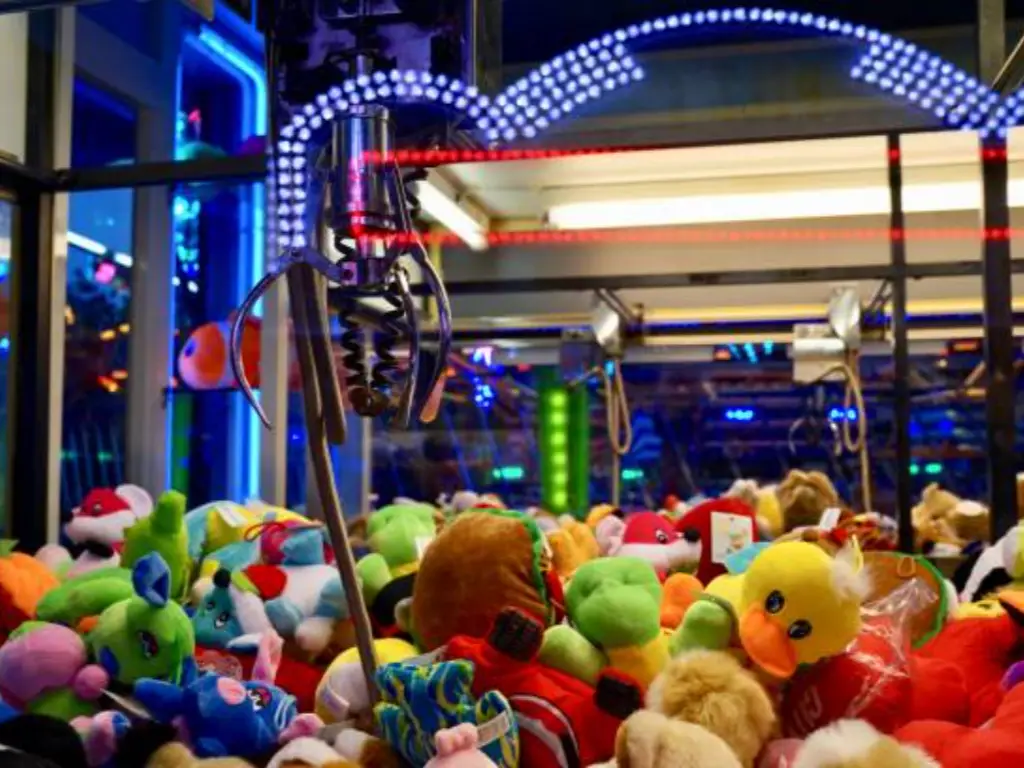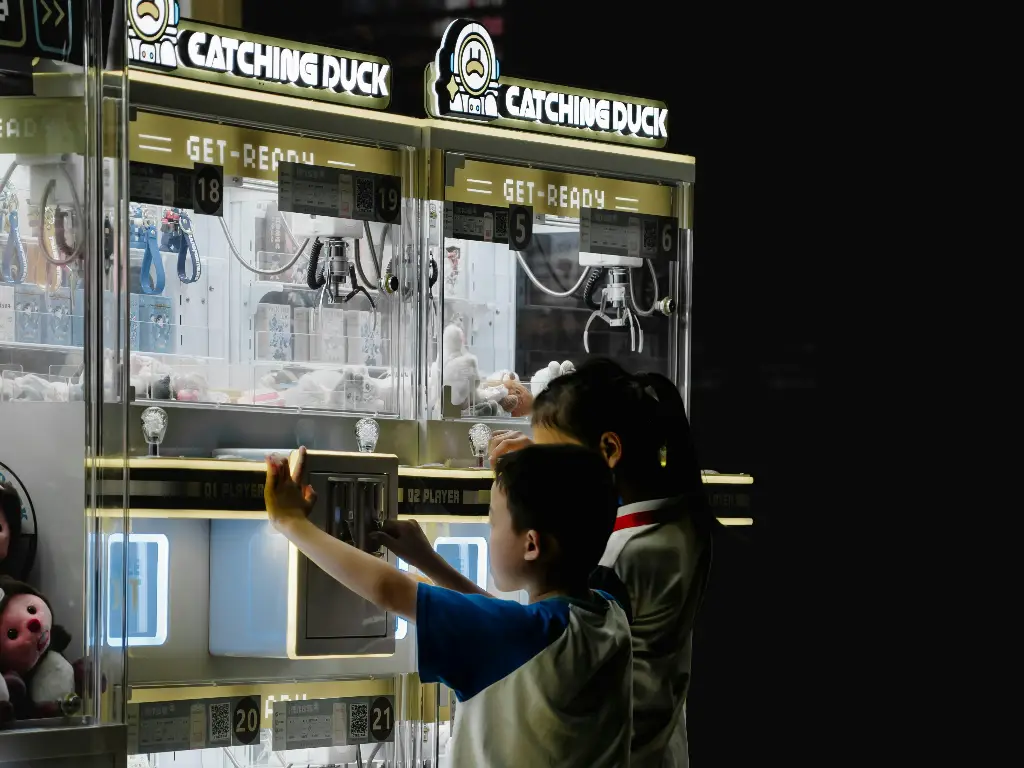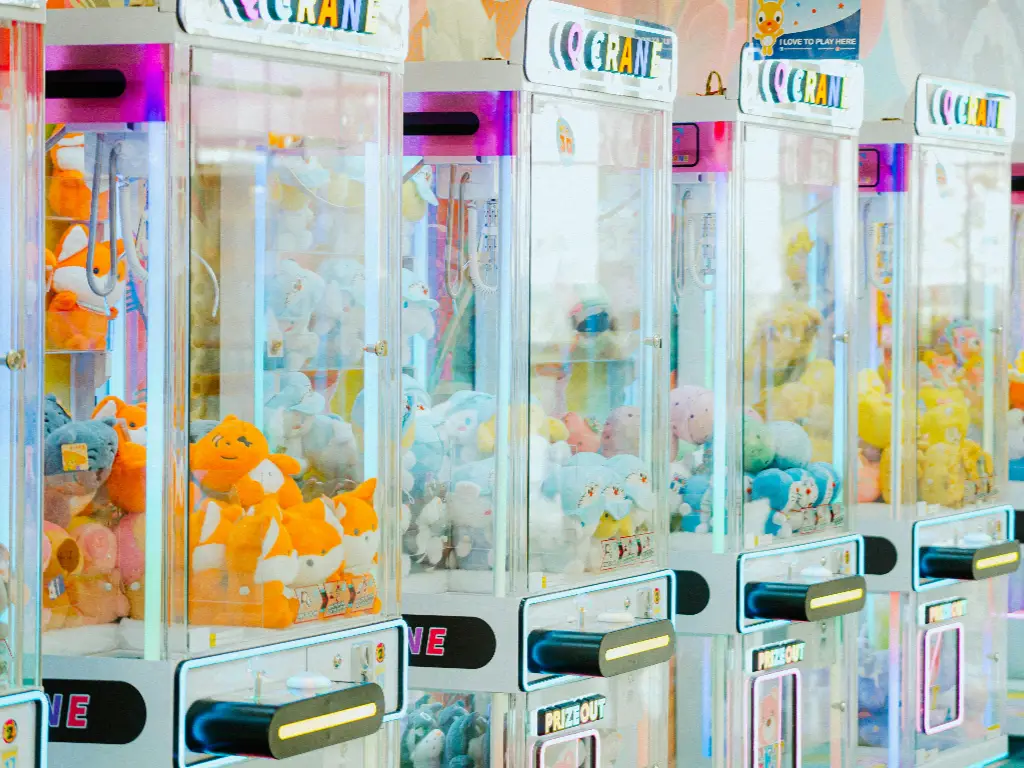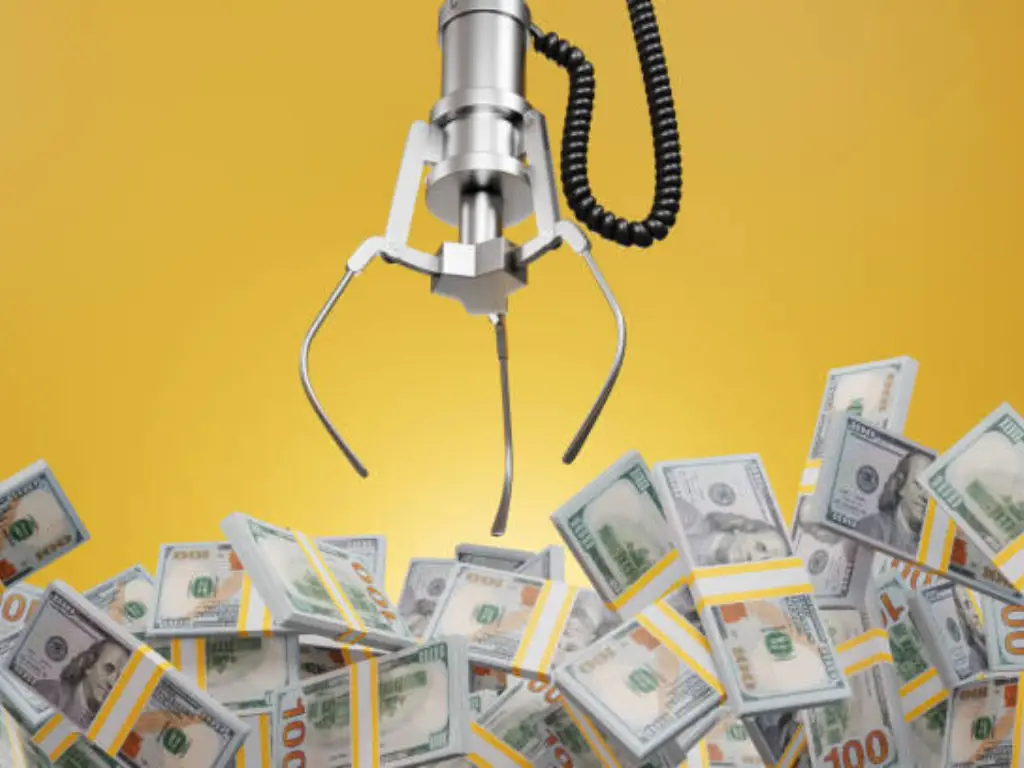Macchine ad artigli, conosciuti anche come giochi di gru, sono iconici graffette arcade. Sono appariscenti, divertimento, e spesso frustrante. Ma ti sei mai chiesto: quanto spesso le macchine da artigli pagano effettivamente? C'è uno schema, o sono completamente casuali? Rompilo con i dati, approfondimenti di esperti, e alcuni suggerimenti per gli addetti ai lavori per aiutarti a capire le probabilità reali.
Tasso di pagamento della macchina ad artiglio: Quello che devi sapere
IL tasso di pagamento di una macchina da artiglio si riferisce alla frequenza con cui la macchina consente a un giocatore di vincere un premio. La maggior parte delle macchine moderne sono progettate con un algoritmo interno che controlla quando l'artiglio è abbastanza forte da afferrare e tenere un premio.
🎯 Tassi di pagamento tipici:
- Intervallo medio: 10%–30% (i.e., 1 In 10 A 1 In 3 Play)
- Macchine di fascia alta: 15%–35%, A seconda delle impostazioni dell'operatore
- Macchine a premi di lusso: Spesso impostato solo al 5%-10%
Gli operatori possono configurare queste percentuali di pagamento per bilanciare la soddisfazione dei giocatori con i margini di profitto.
Le tariffe di pagamento possono variare in modo significativo tra diverse catene arcade e persino singole posizioni. Alcuni operatori possono regolare le tariffe in base al traffico pedonale, eventi speciali, o fattori stagionali. Inoltre, Le macchine più recenti hanno spesso una programmazione più sofisticata in grado di adeguare le tariffe di pagamento in base dinamicamente in base ai recenti modelli di gioco.
Calcolatore di probabilità della macchina ad artiglio
Impostazioni della macchina
📈 Le tue probabilità vincenti
💰 Analisi dei costi
🏆 Risultati della simulazione
💡 suggerimenti pro
- • La maggior parte delle macchine ad artigli arcade ha tariffe di pagamento tra 3-7%
- • I premi di valore superiore hanno in genere tassi di pagamento più bassi
- • I centri di intrattenimento familiare hanno spesso ambienti più generosi
- • Guarda prima gli altri giocatori per valutare l'attività della macchina recente
- • Considera il valore di intrattenimento, non solo i potenziali premi
Sono macchine artigli truccate?
La risposta breve è sì - le macchine ad artiglio sono programmato per limitare quando possono essere vinti premi. Questo non è illegale, Ma è una tattica commerciale gestire il profitto.
Come funziona effettivamente il sistema:
Le macchine ad artiglio utilizzano un sistema a doppio scatto controllato dal software interno. Durante la maggior parte dei giochi, L'artiglio opera con una forza di presa intenzionalmente debole - quanto basta per raccogliere oggetti ma non abbastanza forte da tenerli saldamente durante il trasporto allo scivolo del premio. Questo si chiama “Modalità claw debole.”
Tuttavia, Quando la macchina raggiunge il suo punto di pagamento predeterminato, passa a “Modalità claw forte,” dove la forza della presa aumenta drasticamente. In questa modalità, L'artiglio può afferrare e trasportare con successo premi con un'affidabilità molto più elevata.
Aspetti legali e normativi:
Questo sistema è completamente legale nella maggior parte delle giurisdizioni perché le macchine artigli sono classificate come “Giochi di abilità con un elemento di possibilità” piuttosto che dispositivi di gioco puri. Gli operatori devono in genere visualizzare probabilità o informazioni di pagamento, Anche se questo è spesso in una stampa fine o documentazione tecnica piuttosto che pubblicata in modo prominente.
Cosa significa per i giocatori:
Mentre le macchine controllano quando le vittorie sono possibili, L'abilità ha ancora un ruolo significativo. Anche durante la modalità di pagamento, scarso posizionamento, tempismo, o la selezione dei premi può comportare un tentativo fallito. Al contrario, A volte un'eccezionale abilità può superare le impostazioni di artigli deboli, in particolare con premi più leggeri o posizionamento favorevole.
Come capire se una macchina da artiglio è pronta a pagare
Anche se non puoi saperlo per certo, Diversi indicatori possono aiutarti a prendere decisioni più strategiche su quando giocare.
Osserva altri giocatori:
Il metodo più affidabile è guardare la macchina per 10-15 minuti prima di giocare. Tieni traccia di quanti tentativi consecutivi falliti che assistono. Se vedi 15-20 giocate senza successo di seguito, La macchina potrebbe avvicinarsi alla sua finestra di pagamento. Cerca motivi come i premi che vengono afferrati ma lasciati cadere appena prima di raggiungere lo scivolo - questo spesso indica una modalità di artiglio debole.
Controlla l'accordo di premiazione:
Le macchine pronte a pagare spesso hanno premi che appaiono deliberatamente posizionati per una presa più facile. Operatori a volte “pila” oppure disporre i premi in posizioni più accessibili dopo il rifornimento, Soprattutto se sanno che la macchina è dovuta presto per un pagamento. Cerca oggetti che sembrano insolitamente ben posizionati o premi seduti vicino al bordo delle pile.
Prova la forza dell'artiglio:
Se decidi di giocare, Presta attenzione alla forza della presa dell'artiglio al tuo primo tentativo. Un artiglio forte che afferra saldamente gli articoli ma non fallisce potrebbe indicare che sei vicino alla modalità di pagamento. Al contrario, Un artiglio che sembra a malapena chiudere o rilascia immediatamente gli oggetti è probabilmente in modalità debole.
Modelli basati sul tempo:
Alcuni operatori regolano le macchine durante ore specifiche. Le macchine hanno maggiori probabilità di essere in modalità pagamento durante le ore di punta (serate, fine settimana) Quando sono in giro più giocatori per assistere alle vittorie, Creare eccitazione e attirare ulteriori giocatori. Le sessioni di mattina presto o a tarda notte potrebbero trovare macchine in cicli di pagamento più stretti.
Cerca i recenti vincitori:
Controlla se ci sono nuovi premi nello scivolo del premio o chiedi al personale quando la macchina è stata vinta l'ultima volta. Se sono passate diverse ore o una giornata intera senza una vittoria significativa, Le probabilità potrebbero muovere a tuo favore.
Indicatori di manutenzione della macchina:
Le macchine appena rifornite con premi ordinatamente disposti potrebbero essere preparati prima per generare interessi iniziali. Al contrario, Le macchine con accordi a premi arruffati potrebbero aver recentemente pagato e ripristinato a un nuovo ciclo.
Ascolta il meccanismo:
I giocatori esperti riferiscono spesso che gli artigli in modalità pagamento sembrano leggermente diversi: il motore potrebbe funzionare in modo più forte, o il meccanismo di chiusura potrebbe produrre un suono più decisivo. Mentre è sottile, Questi segnali audio possono talvolta indicare impostazioni di artigli più forti.
Ricorda che questi sono indicatori, non garanzie. Le macchine per artigli coinvolgono sia elementi programmati che componenti di abilità autentiche, Quindi il successo alla fine dipende dalla combinazione di tempi intelligenti con una buona tecnica.
I fattori influenzano le tariffe di vittoria della macchina Claw
🧩 Il meccanismo di artiglio
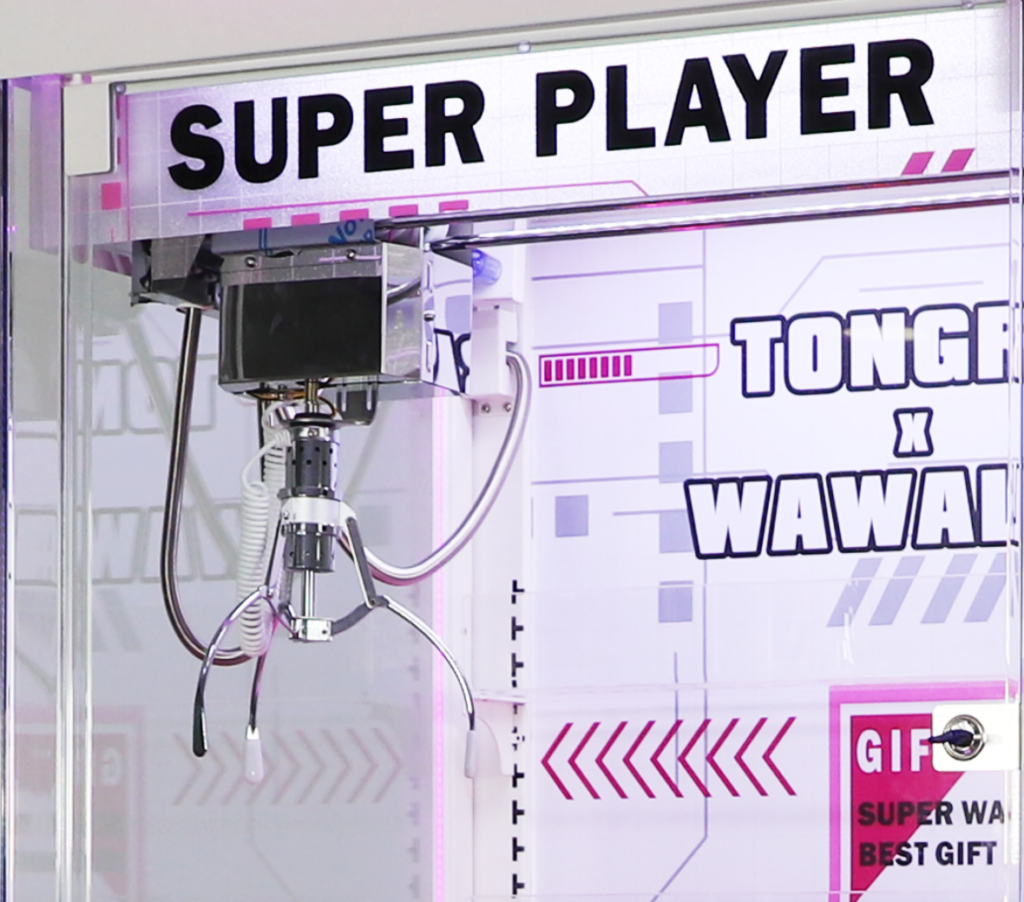
Il design meccanico di Claw è sia la fondazione che il nucleo delle macchine per artigli. Ogni dettaglio è importantela forma, misurare, e materiale dell'artiglio, così come la sua area di contatto con i premi, influire direttamente sulla sua stabilità durante le prese.
Ad esempio, Gli artigli con bordi eccessivamente lisci possono scivolare quando si toccano il premio, portando al fallimento. Allo stesso modo, La tensione a molla interna e gli angoli di apertura del claw sono cruciali. Questi parametri determinano se l'artiglio può chiudere saldamente attorno al premio e mantenere abbastanza presa durante il sollevamento. Inoltre, La precisione e la stabilità del sistema di trasmissione interno della macchina svolgono un ruolo significativo. Contattare il tuo produttore di macchine artigli Se hai bisogno di informazioni dettagliate.
🔨 Design dell'algoritmo
La probabilità di pagamento delle macchine ad artiglio è fortemente influenzata dalla programmazione algoritmica. Macchine moderne di artigli Affidati ai sistemi di controllo elettronico per regolare dinamicamente la forza di presa e la velocità di movimento attraverso gli algoritmi software.
Questi algoritmi considerano variabili come il tempo giocato, Numero di tentativi, e denaro speso per controllare la difficoltà del gioco e bilanciare la redditività per gli operatori. Per esempio, Alcune macchine ad artiglio possono avere un tasso di successo più elevato durante i tentativi iniziali di incoraggiare il gioco continuo. Tuttavia, All'aumentare dei tentativi, Il tasso di successo diminuisce gradualmente per garantire che gli operatori mantengano la redditività. Questo “difficoltà progressiva” Il design crea una miscela di eccitazione, sfida, e imprevedibilità per i giocatori.
🏱 Posizionamento del premio
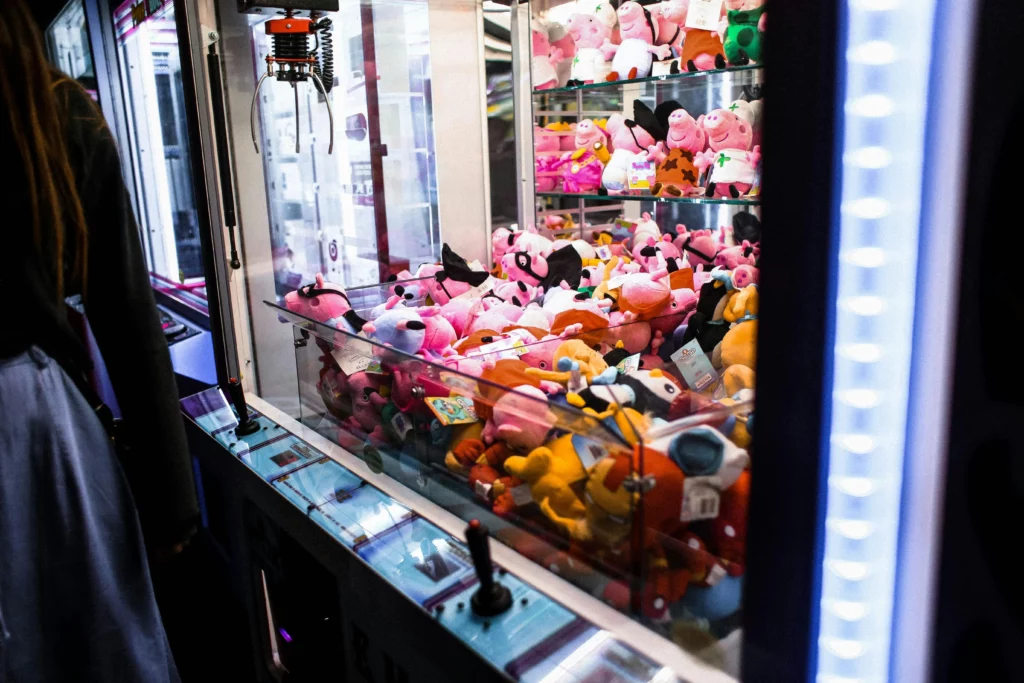
La disposizione dei premi è un altro fattore critico nel gameplay di Claw Machine. Gli operatori esperti posizionano strategicamente i premi in base alla loro forma, peso, e popolarità.
Alcuni premi sono deliberatamente collocati in angoli difficili da raggiungere o circondati da ostacoli, Aumentando la difficoltà di afferrarli. Inoltre, I premi ben impilati possono lasciare lacune minime, rendendo più difficile per l'artiglio afferrare il bersaglio. Al contrario, La spaziatura dei premi o organizzarli in livelli può aumentare sottilmente le possibilità di successo, fungere da incoraggiamento nascosto per i giocatori.
🕹️ Tecnica del giocatore
L'abilità del giocatore ha anche un ruolo nel successo della macchina di artigli. Sebbene le macchine ad artiglio siano intrinsecamente giochi di possibilità, I giocatori possono migliorare le loro probabilità con l'osservazione, apprendimento, e pratica.
Ad esempio, I giocatori possono analizzare la velocità e la forza del claw, cronometrare il pulsante Premere per afferrare ottimale. Osservare i colpi di premi e targeting per coloro che sembrano più facili da afferrare può anche aumentare i tassi di successo. Alcuni addirittura sfruttano potenziali punti deboli della macchina, come scuotere leggermente la macchina per riposizionare i premi o migliorare l'attrito di artiglio durante la chiusura (Anche se questo non è sempre consigliabile!).
Psicologia del giocatore
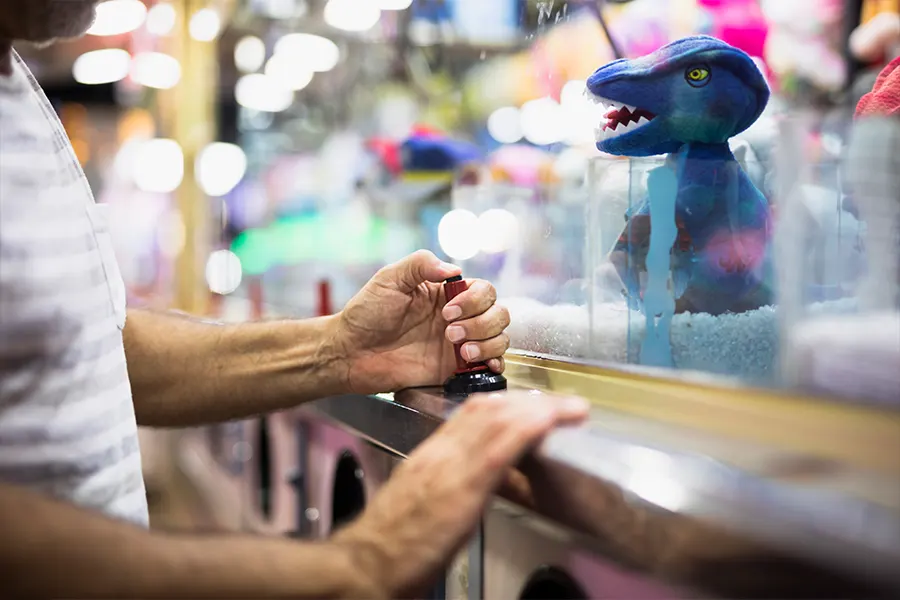
Infine, I fattori psicologici influenzano significativamente la percezione dei giocatori della probabilità di presa. Sentimenti di frustrazione dopo ripetuti fallimenti o invidia dopo aver assistito al successo di qualcun altro può avere un impatto su come i giocatori giudicano la difficoltà del gioco.
A volte, Anche le vittorie minori possono creare un senso di realizzazione e incoraggiare ulteriori tentativi, Rendere il gioco più gratificante, anche se i meccanici della macchina rimangono invariati.
FAQ: I pagamenti della macchina di artigli spiegati
🎲 sta vincendo in base all'abilità o alla fortuna?
Entrambi. Alcune macchine premiano l'abilità durante i cicli di pagamento, Ma al di fuori di quei cicli, La fortuna è quasi irrilevante - L'artiglio semplicemente non si afferverà abbastanza strettamente.
📊 Come posso migliorare le mie probabilità?
- Guarda altri giocatori e prova dopo una serie di perdite
- Target più leggero, Premi vagamente pieno
- Evita macchine con premi strettamente inceppati o artigli angolati
⚖️ ci sono leggi che regolano i pagamenti della macchina per artigli?
In alcune giurisdizioni, SÌ. Per esempio, alcuni Stati Uniti. Gli Stati richiedono un pagamento percentuale minimo o un mandato di divulgazione del valore premio. Tuttavia, La regolamentazione è generalmente lassista.
Pensieri finali
In sintesi, La probabilità di pagamento delle macchine ad artiglio è un concetto poliedrico che coinvolge la progettazione meccanica, Algoritmi software, Accordi a premi, tecniche del giocatore, e dinamiche psicologiche.
Avere più domande sulle macchine arcade o vuoi crearne una per la tua attività? Mettiti in contatto con noi - Aiutiamo gli operatori a ottimizzare le prestazioni della macchina e la soddisfazione del giocatore.
Se sei ansioso di trasformare la frustrazione in successo e prendere quei premi come un professionista, Dai un'occhiata alla nostra guida definitiva su 10 Suggerimenti per vincere le macchine ad artiglio ogni volta!












